Controlling elemental forces, channeling healing energy, and badass combat magic is what the School of Evocation is all about. Evokers are the classic war-mages — the fireball-tossing, wound-suturing, earth-shaking mages whose sheer willpower can cause devastating destruction.
Before you sign up for the school that can teach you about this awesome power, take a squint at the curriculum. Here are 19 statistics on Dungeons and Dragons 5e’s School of Evocation:
-
Evocation’s shortest spell by word count is Divine Favor (23 words), a 1st-level Paladin-exclusive spell. The longest spell in the school is Bigby’s Hand (447 words).
-
Evocation is the most common class of spell in DnD 5e — there are 101 Evocation spell, which accounts for 21% of the spells in the game.
-
Evocation has the second shortest average (122) and third-shortest median (102) word counts of DnD’s 8 spell schools.
-
Naturally, Wizards have access to the most Evocation spells at 62 — nearly 2/3 of what the school offers. Rangers, with only 4 Evocation spells, are the only spellcasters to have <10 Evocation spells on their base spell list.
-
Paladins have the most Evocation-heavy spell list (26%), barely beating out Sorcerers (25.26%). Rangers are again the lowest in this category, wtih only 6.9% of their spell list comprising of Evocation spells.
-
70% of Evocation spells deal damage. No surprises there, as this is the school with many of the game’s classic damage-dealing spells. Some players are also confused to see that 9% of Evocation spells heals, but the school is about channeling energy of every variety, including restorative.
-
Evokers are a noisy bunch of spellcasters — 97% of Evocation spells have a verbal component. 52% of Evocation spells require a material component; of those only 2 consume that component.
-
The most expensive Evocation spells overall are Forcecage and Contingency — each requires a material component of 1,500 gp (ruby dust and fancy statue of yourself, respectively). Neither consumes the material component, though.
Hallow, which requires the caster to burn 1,000 gp worth of herbs, oil, and incense, is the most costly Evocation spell that consumes the material components.
-
There are 43 concentration spells in the School of Evocation, and only 1 ritual spell (Leomund’s Tiny Hut).
-
The Player’s Handbook started DnD 5e with 74 Evocation spells. Xanathar’s Guide to Everything added 23 and Tasha’s Cauldron of Everything another 4.
-
Evokers tend to be snipers, with 60- and 120-foot ranged spells being the most common. There are also a fair few self-based area of effect spells with varying shapes and sizes.
-
There are 60 area of effect spells in the School of Evocation. Lots of collateral damage, these Evokers.
-
Radiant damage is the most common damage type for Evocation spells, followed by Fire, Thunder, and Bludgeoning.
-
Dexterity saving throws are the most common in the school of Evocation, followed by Constitution. There are no Intelligence saving throws on Evocation spells, and Charisma saves are quite rare.
-
Evocation’s most damaging ability is Meteor Swarm — it deals 20d6 fire damage and 20d6 bludgeoning damage on a failed save, for an average of 140 damage overall (on a failed Dexterity save).
-
82% of Evocation spells have a casting time of 1 action, slightly above the game-wide average.
-
Instantaneous spells are the most common in the School of Evocation by a wide margin, with 1 minute and 10 minutes being the next most common spell durations.
-
Evocation spells follow a fairly regular arc, with lower-level spells being slightly more common. 5th-level Evocation spells stand out as more common than 3rd- or 4th-level spells, though.
-
29 Evocation spells have been around since the first edition of Dungeons and Dragons:
| Blade Barrier | Leomund’s Tiny Hut |
| Burning Hands | Lightning Bolt |
| Cone Of Cold | Light |
| Dancing Lights | Magic Missile |
| Darkness | Meteor Swarm |
| Delayed Blast Fireball | Mordenkainen’s Sword |
| Earthquake | Otiluke’s Freezing Sphere |
| Faerie Fire | Prismatic Spray |
| Fire Shield | Shatter |
| Fire Storm | Shocking Grasp |
| Fireball | Wall Of Fire |
| Flame Strike | Wall Of Force |
| Gust Of Wind | Wall Of Ice |
| Heal | Wall Of Stone |
| Ice Storm |
Methodology
All data is taken from the three main fifth edition rulebooks (Player’s Handbook, Xanathar’s Guide to Everything, and Tasha’s Cauldron of Everything).
Word counts do not include the spell name, level, school, casting time, range, components, or duration. Nor do they include the stat blocks of any summoned or conjured creatures. They also do not include the words “At Higher Levels” for spells that can be upcast. Word counts do, however, include all text included in charts, including numbers.
One statistic from above is somewhat subjective: spell types (damage, heal, buff, debuff, utility). I tried to take a common-sense approach to what category each spell falls into and limit each spell to two types. Hopefully, these spell classifications at least prove useful for relative comparisons between spell schools if nothing else.
As a final disclaimer, I did all of this by hand, so there are almost certainly some small errors in my work — I’m only human.
How to Use Evocation Spells in DnD 5e
How to use Booming Blade
How to use Eldritch Blast
How to use Fire Bolt
How to use Frostbite
How to use Green-Flame Blade
How to use Light
How to use Lightning Lure
How to use Shocking Grasp
How to use Thunderclap
How to use Word of Radiance
How to use Burning Hands
How to use Chromatic Orb
How to use Cure Wounds
How to use Faerie Fire
How to use Guiding Bolt
How to use Healing Word
How to use Hellish Rebuke
How to use Magic Missile
How to use Sacred Flame
How to use Searing Smite
How to use Thunderous Smite
How to use Thunderwave
How to use Witch Bolt
How to use Darkness
How to use Scorching Ray
How to use Shatter
How to use Spiritual Weapon
How to use Aura of Vitality
How to use Daylight
How to use Leomund’s Tiny Hut
How to use Sending
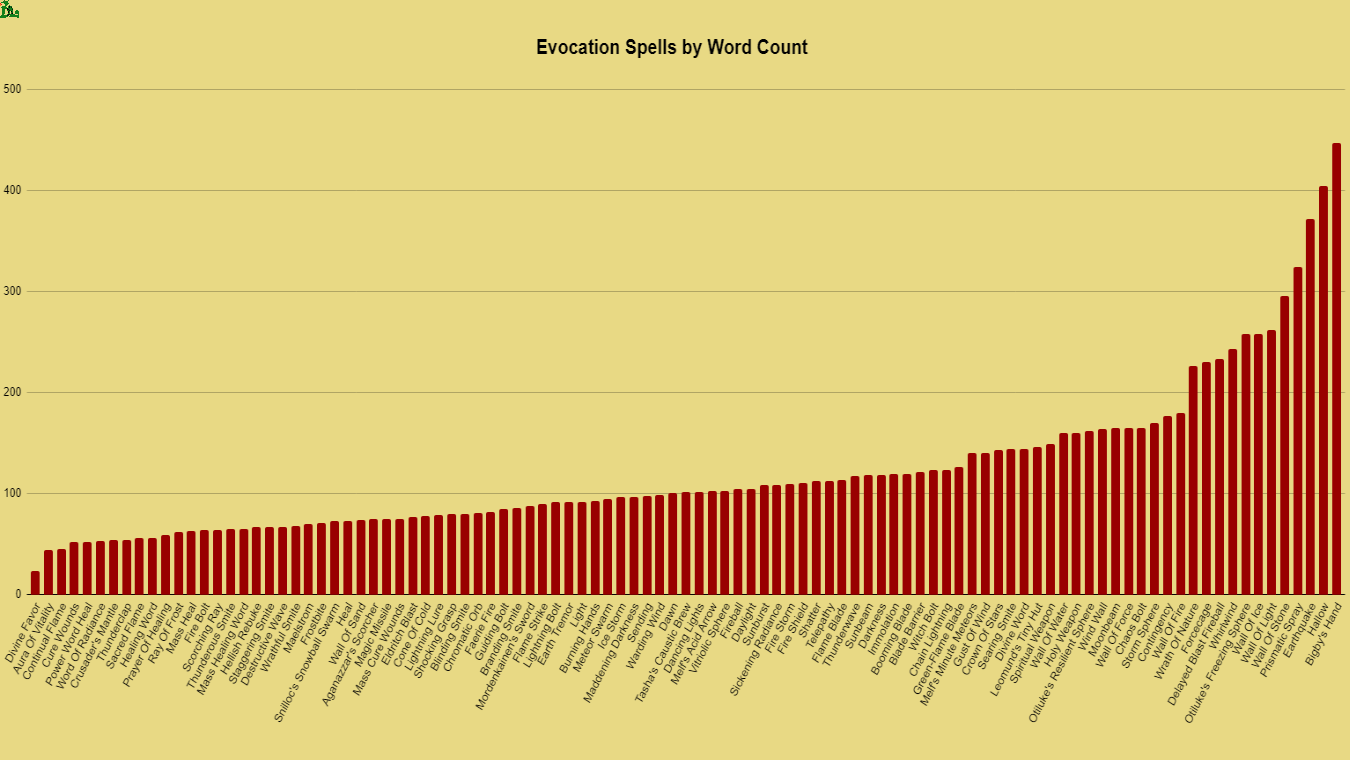
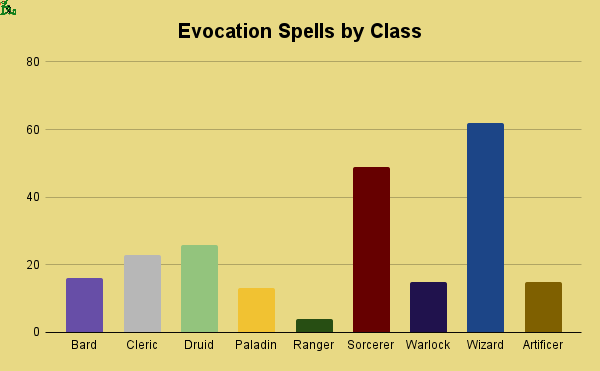
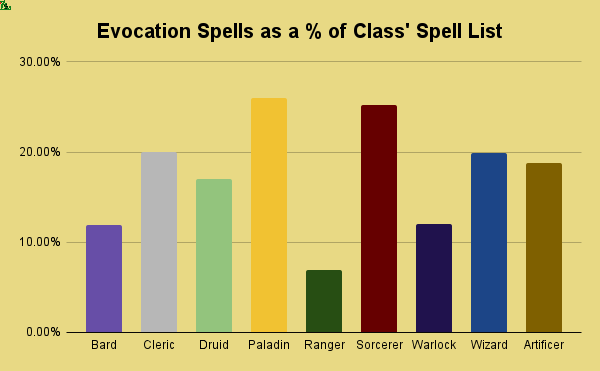
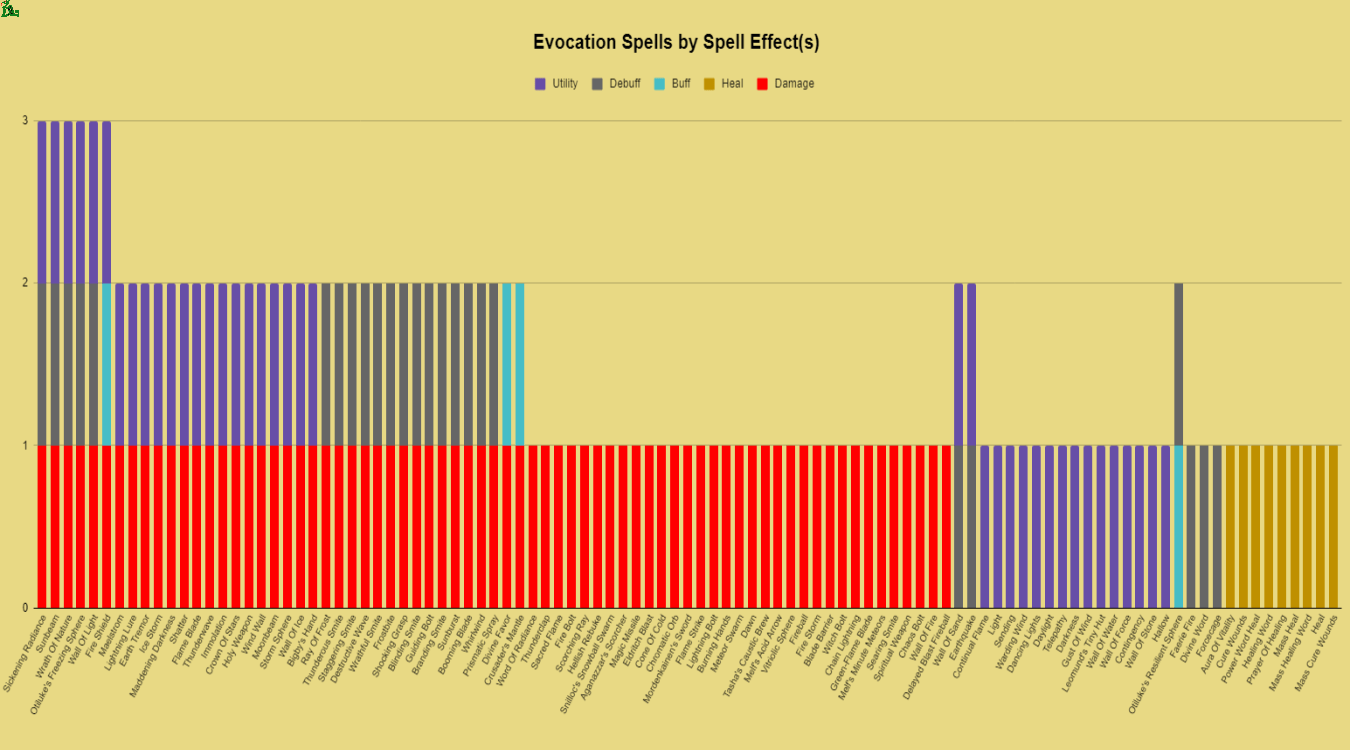
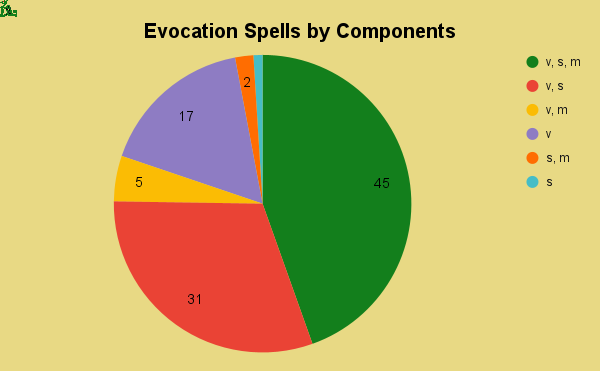
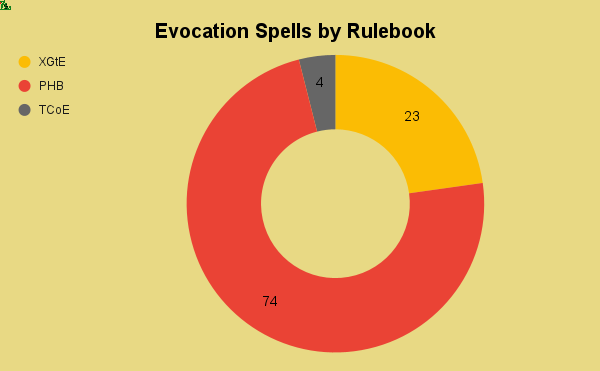
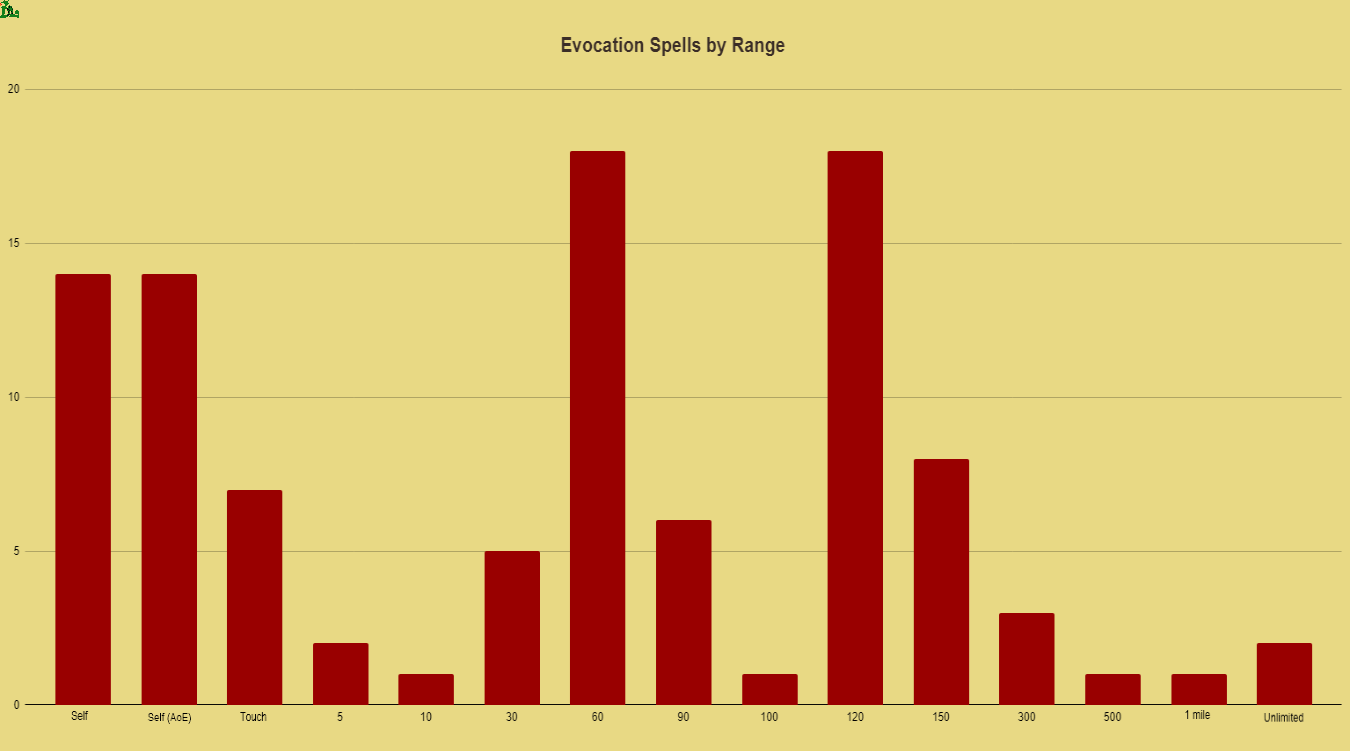
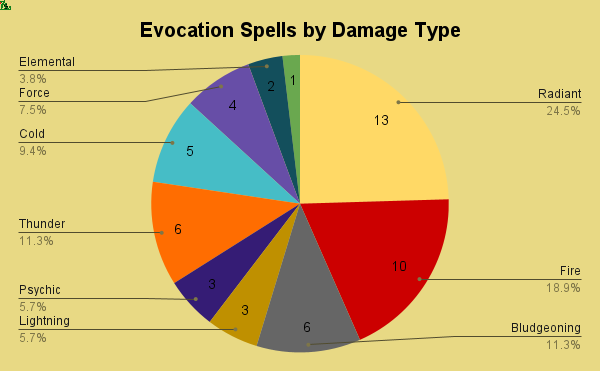
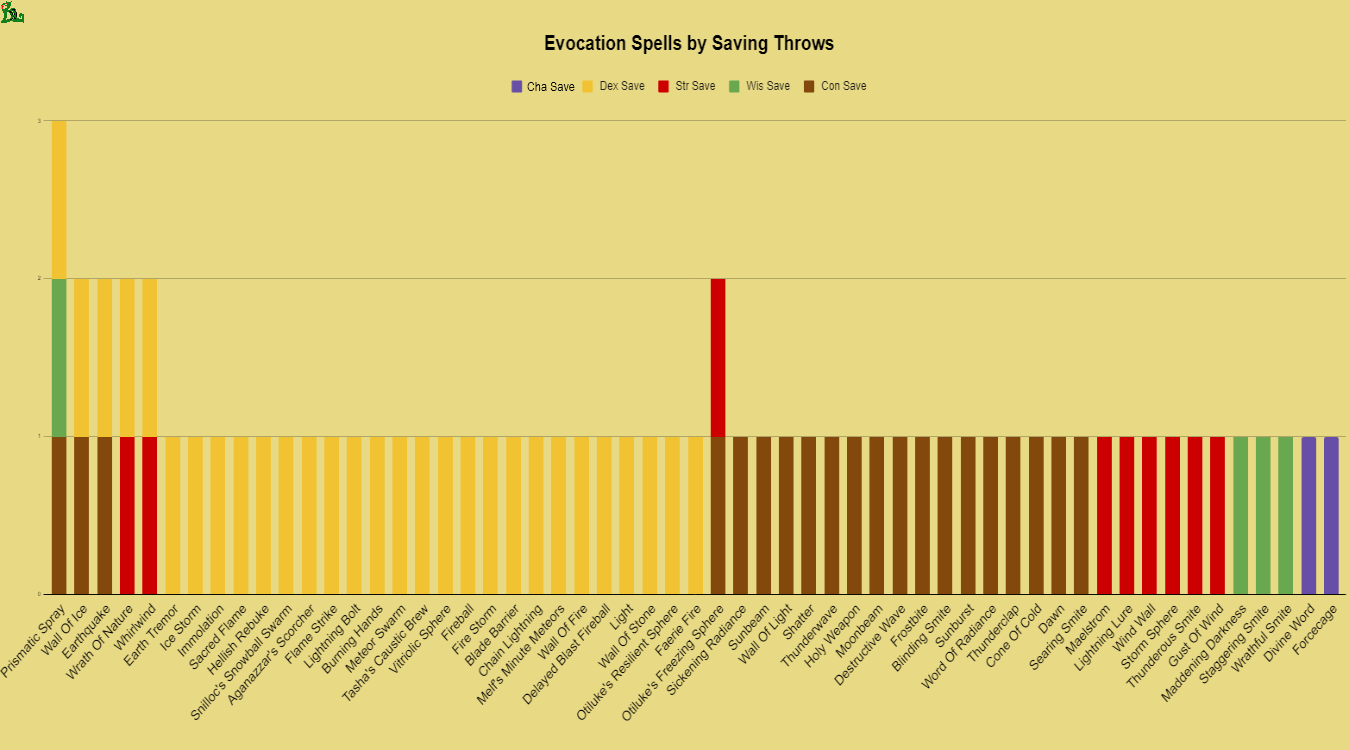
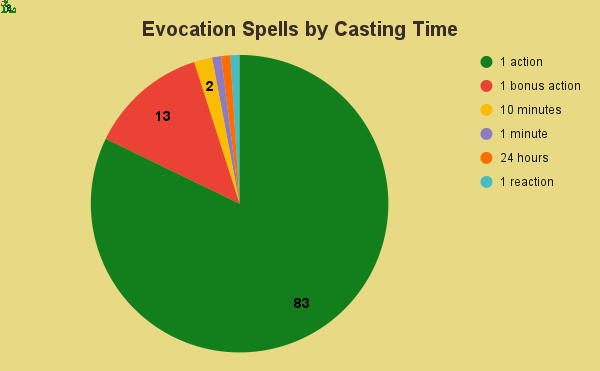
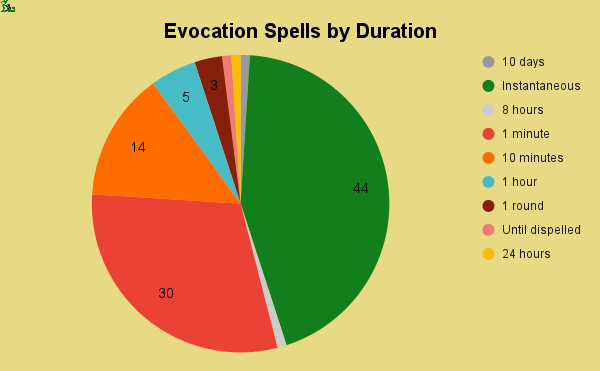
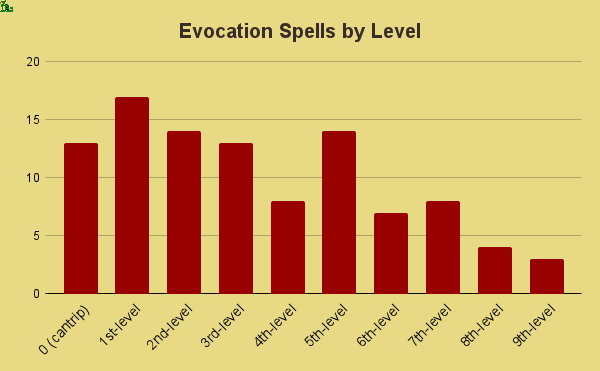
![Debuff Spells 5e [DnD Full List] dnd-ranger-casting-a-spell-on-spiders-5e](https://www.dndlounge.com/wp-content/uploads/2023/11/dnd-ranger-casting-a-spell-on-spiders-5e-300x169.webp)
![Healing Spells 5e [DnD Full List] dnd-elvish-druid-healing-human-fighter-5e](https://www.dndlounge.com/wp-content/uploads/2023/11/dnd-elvish-druid-healing-human-fighter-5e-300x169.webp)
![Buff Spells 5e [DnD Full List] dnd-tiefling-cleric-blesses-her-party-5e](https://www.dndlounge.com/wp-content/uploads/2023/11/dnd-tiefling-cleric-blesses-her-party-5e-300x169.webp)
![AoE Spells 5e [DnD Area of Effect + Multitarget Spells] dnd-dwarvish-wizard-casting-meteor-swarm-5e](https://www.dndlounge.com/wp-content/uploads/2023/11/dnd-dwarvish-wizard-casting-meteor-swarm-5e-300x169.webp)